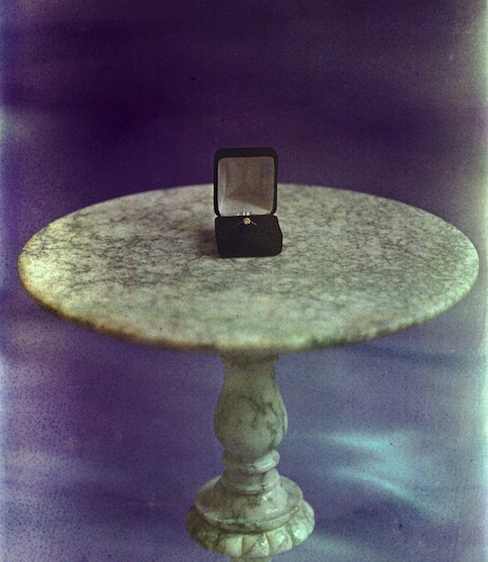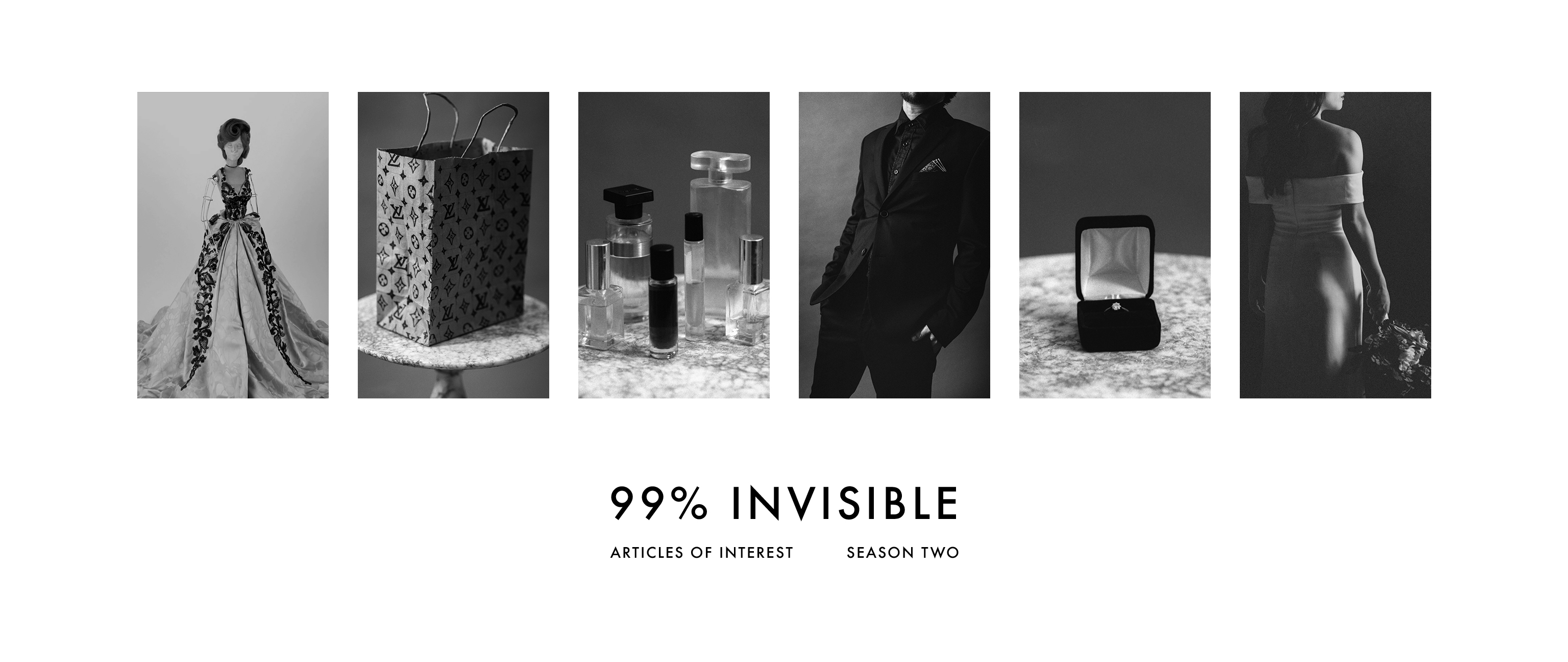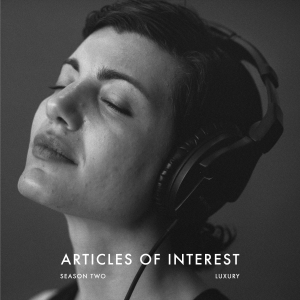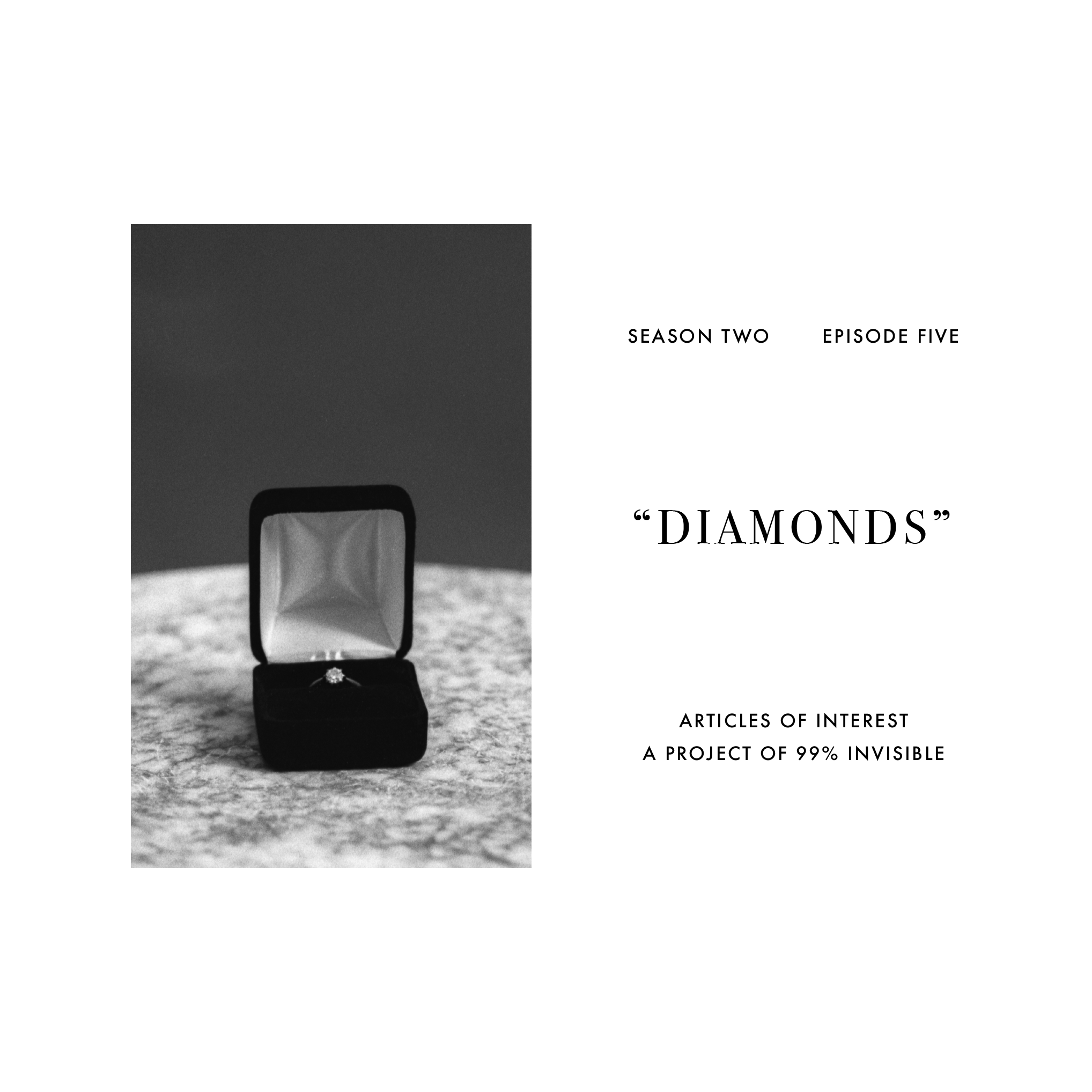Diamonds represent value, in all its multiple meanings: values, as in ethics, and value as in actual price. But what are these rocks actually worth? The ethics and costs of diamond rings have shifted with society, from their artificial scarcity perpetuated by DeBeers to their artificial creation in labs.

Articles of Interest is a limited-run podcast series about fashion, housed inside the design and architecture podcast 99% Invisible. Launched in 2018, the show encourages people to rethink the way we look at what we wear and what it says about us.

This second season of Articles of Interest features six interlocking episodes examining luxury and our collectively held ideas of glamour across the United States, from Chicago to Canal Street. Think of it like a podcast concept album, with recurring themes and threads that examine the ways we signal success and authenticity in America.

Articles of Interest was written and performed by Avery Trufelman, who spoke with Rachelle Bergstein, John Ciraldo and Jonathan Levine-Miles of J2 Materials, Kathryn Money of Brilliant Earth, Courtney Riddle, and Paul Zimnisky for this episode. This season was edited by Chris Berube, scored by Rhae Royal and fact-checked by Tom Colligan with additional checking by Graham Hacia; mix and tech production by Sharif Youssef with additional mixing by Katherine Rae Mondo; theme songs by Sasami; photography by Austin Hobart and graphic design by Helen Tseng.
Special thanks to Alex Weindling of Great Heights, Jay Mehta, and John Fecile. Thanks as well as the whole 99pi team for support, insights, and edits, including Joe Rosenberg, Emmett FitzGerald, Vivian Le, Sean Real, Lasha Madan, Kurt Kohlstedt, Delaney Hall, and Katie Mingle. And Roman Mars is the rare gem of the whole series.



Comments (6)
Share
As a male I am curious about why a male is supposed to give a diamond, the more expensive the diamond the more serious we are supposed to be, and in return we get a gold band. How come we are supposed to ‘prove’ our love with money. Seems like an unhealthy way to start a healthy relationship.
So… several businesses interviewed for this episode might be able to use an idea of mine (free… but give me credit :), i.e., the “eco ring” that is man made (cost $1k) but costs AS MUCH as a real diamond ($4k) because it comes with $3k of donations in honor of the engagement/couple. More impact, same “sacrifice” ;)
More here:
https://kysq.org/aguanomics/2018/03/free-idea-the-eco-ring/
Happy to hear the diamond obsession might be waning. We opted for fancy appliances for our kitchen renovation instead. To this day we call it our “engagement range”…and we USE it everyday. We ended up getting simple wedding bands for the symbolism and sentiment.
Still not buying the explanation at the end, that diamonds could remain so expensive because we value them so greatly. Sure, I’d be willing to attach some sentimental value to an object, but not for the sole reason of letting the retailer have a markup of several hundred percent on it.
I mean, I’d value a homemade and handwritten card from a close family member greatly too, but that doesn’t mean the crafts store should sell crayons and paper for hundreds of dollars when they get it from their supplier for a few cents.
So yeah. If the diamond cost the retailer, say, 200 dollars to obtain, no way in heck I’d pay more than 250 for it. And if the retailer insists that 2000 is the price, well, tough luck for them. Sure, spending 2000 dollars on something signals a bigger commitment than spending 250, but the way this business is set up it essentially boils down to a $1750 donation to the jeweler on top of paying the value of the diamond. I could easily think of millions upon millions of people who deserve those $1750 way, way more than the scumbag who wants to sell a shiny pebble for ten times its actual value.
I have a feeling this is very american, or at least here in Europe the engagement ring is not really a thing. Yes some people do it but it´s a very small percentage. And I´m kinda glad it´s like this.
4C system was developed by GIA, which is an institution independent of DeBeers. In the podcast you say that it was developed by DeBeers